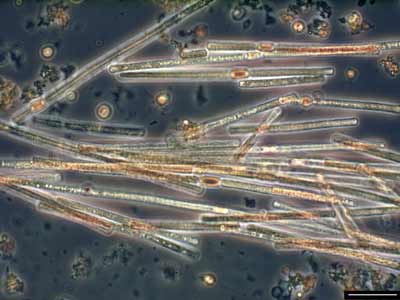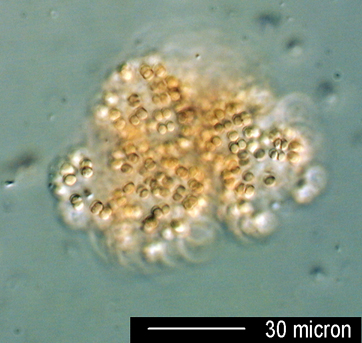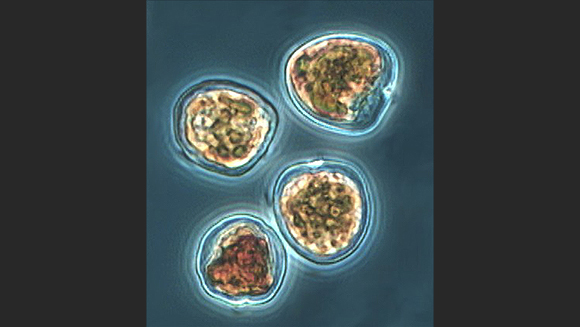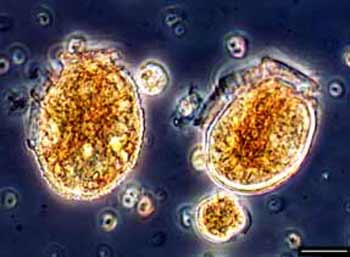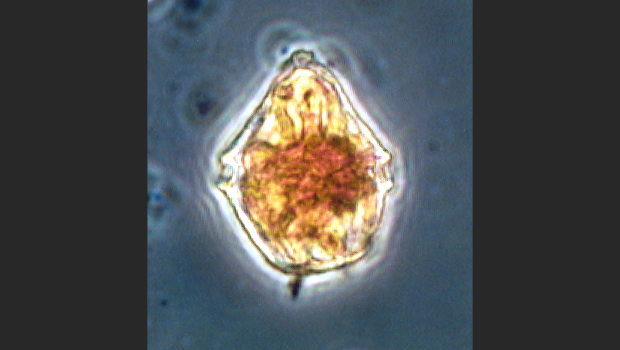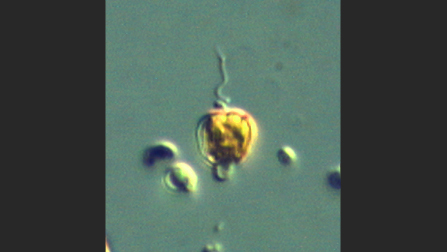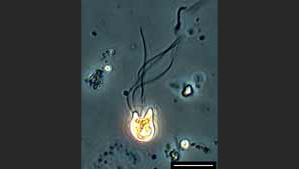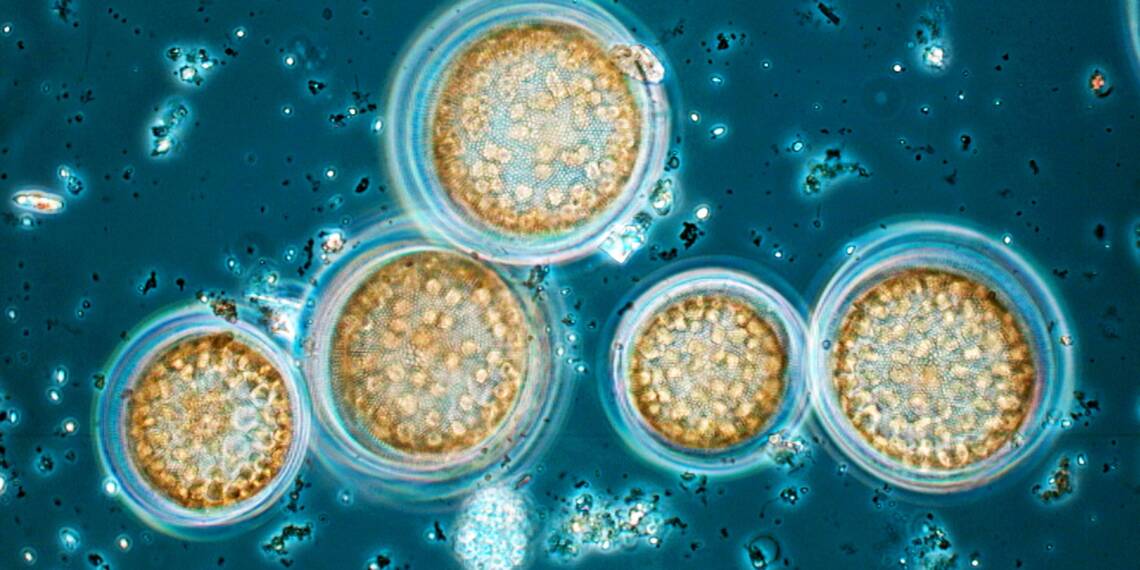
Phytoplankton can be observed under a microscope
Phytoplankton consists of microscopic algae that float or drift in water. To the human eye, algae often appear as brown, red, or green discoloration in the water or even as a mass, but when viewed under a microscope, an incredibly diverse world opens up. In the phytoplankton image gallery, you can see what different plankton species look like!
The images in the gallery have been produced as part of the Finnish Environment Institute’s phytoplankton monitoring. When using the images, a credit to the photographer must be included. The photographer’s name and additional information about the species are visible when clicking on the image.
Blue-Green Algae
Blue-green algae, or cyanobacteria (Cyanophyceae), are among the oldest organisms on Earth, having existed for 2.7 billion years. Although blue-green algae are classified as phytoplankton, they are structurally bacteria. However, they photosynthesize like plants, making them important producers in the food web. The characteristic bluish color of blue-green algae is due to a-chlorophyll and phycocyanin pigments. About 80 planktonic blue-green algae species live in the Baltic Sea, and some of them are toxic. Harmful blue-green algae blooms are most often caused by the species Aphanizomenon flos-aquae and Nodularia spumigena.
Read more about blue-green algae on Järvi-meriwiki website (in Finnish).(siirryt toiseen palveluun)
Dinoflagellates
Dinoflagellates are primarily unicellular and biflagellate algae. There are over 200 species of dinoflagellates in the Baltic Sea, and they form an important part of the Baltic Sea’s phytoplankton. This group of algae gets its name from the cellulose plates that cover some species. Some dinoflagellates are toxic. Dinoflagellates occasionally form mass occurrences that color the water brown or reddish. Some species also produce light through bioluminescence.
Dinoflagellates are present in the Baltic Sea year-round and make up a large part of the Baltic Sea’s spring bloom, which is the increase in algae that occurs in the spring. Some species also occur in ice cavities.
Diatoms
Diatoms are unicellular yellow-brown algae. There are about 700-800 planktonic diatom species in the Baltic Sea, and they are an important part of the Baltic Sea’s phytoplankton. Diatoms get their name from their silica-based cell wall, called a frustule. Diatoms are present year-round, but they are most abundant in cold water. Some species also occur in ice cavities. In spring, diatoms can appear in large numbers and color the water brown, but they are not toxic.
Read more about diatoms on Järvi-meriwiki website (in Finnish).(siirryt toiseen palveluun)
Cryptomonads
Cryptomonads are unicellular flagellates, with about twenty species living in the Baltic Sea. Most of them are present year-round and can occasionally be very abundant. Their name comes from the cavity on the ventral side of the cell, called the gullet, to which the algae’s two different-length swimming flagella are attached. The cells are flat and oval or teardrop-shaped, and they do not have a rigid cell wall. No toxic species of euglenoids are known.
Read more about cryptomonads on Järvi-meriwiki website (in Finnish).(siirryt toiseen palveluun)
Euglenoids
Euglenoids are unicellular algae with one or two (sometimes even four) swimming flagella. They are named after the red eyespot located at the front of the cell, which they use to sense light. Most euglenoids are freshwater species, with about 40 species living in the Baltic Sea. Occasionally, especially the species Eutreptiella gymnastica forms blooms, coloring the water green.
Read more about euglenoids on Järvi-meriwiki website (in Finnish).(siirryt toiseen palveluun)
Chrysophytes
Chrysophytes are primarily yellowish-brown algae that thrive mainly in freshwater.
Read more about chrysophytes on Järvi-meriwiki website (in Finnish).(siirryt toiseen palveluun)
Green Algae
Green algae are a large and diverse group of algae, most of which live in freshwater. They are the algae most closely related to true plants. The group of green algae includes both macroalgae, which are large algae visible to the naked eye, and microscopic phytoplankton algae.
Read more about green algae on Järvi-meriwiki website (in Finnish).(siirryt toiseen palveluun)
Haptophytes
Haptophytes are small flagellated algae. Some species produce algal toxins and cause fish deaths.
Read more about haptophytes on Järvi-meriwiki website (in Finnish).(siirryt toiseen palveluun)
